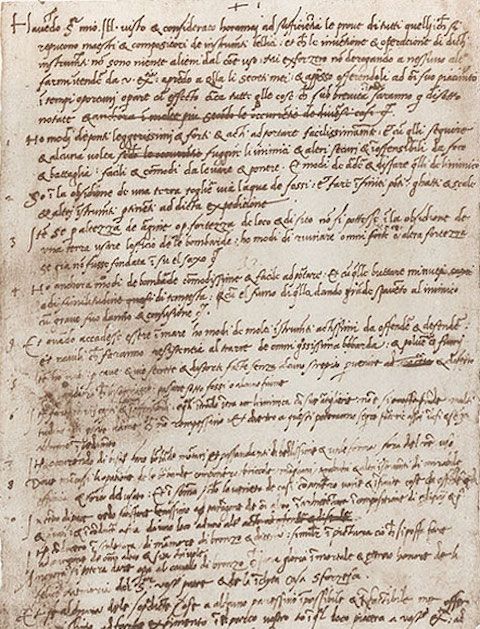Da Vinci's Epic Resume Hack: The 1482 Letter That Scored a Renaissance Genius His Dream Job! 🎨
In 1482, at age 30, Leonardo da Vinci wrote a bold job application to Ludovico il Moro, Duke of Milan. This "resume" prioritized his engineering and military inventions over his art—a smart tailor to the employer's needs. Here's what we can learn from a genius who got hired 543 years ago.
Think Your Resume Is Renaissance-Ready?
Check your ATS score in 30 seconds—see if you'd beat Da Vinci! 🚀

The Backstory: Why Milan?
Leonardo da Vinci was already making waves in Florence as a talented artist and inventor. But in 1482, political tensions and limited opportunities pushed him to seek greener pastures. Milan, under Duke Ludovico Sforza (known as "il Moro"), was expanding its military power and needed innovative minds.
Da Vinci saw his chance. Instead of walking in with paintings, he crafted a strategic pitch letter that would make modern marketers jealous. The result? He landed the gig and spent 17 years in Milan, creating The Last Supper and countless engineering marvels.
Resume Wisdom: Then vs. Now
The Full Letter (English Translation)
Here's the complete translated text. Notice how he builds credibility, leads with value, and saves his artistic credentials for last:
From: Leonardo da Vinci
Date: Circa 1482
Subject: Application for Court Engineer & Artist Position
Most Illustrious Lord, Having now sufficiently considered the specimens of all those who proclaim themselves skilled contrivers of instruments of war, and that the invention and operation of the said instruments are nothing different from those in common use: I shall endeavor, without prejudice to any one else, to explain myself to your Excellency, showing your Lordship my secret, and then offering them to your best pleasure and approbation to work with effect at opportune moments on all those things which, in part, shall be briefly noted below.
[10 more skill points...]
5 Resume Lessons from a Renaissance Master
Research First, Write Second
Da Vinci knew the Duke's pain points. He didn't send a generic letter. Neither should you.
Lead with Their Needs, Not Your Ego
Art was Da Vinci's calling card, but he buried it at the end because the Duke needed engineers first.
Quantify Everything
"Fling small stones resembling a storm" paints a picture. "Good at artillery" doesn't.
Show, Don't Just Tell
Da Vinci offered to demonstrate his inventions. Proof beats promises every time.
Confidence + Humility = Hired
He boldly claimed superiority, then closed with "utmost humility." Balance matters.
Da Vinci Didn't Have ATS Software. You Do. 😅
In 1482, you could hand-deliver a letter. In 2025, your resume hits a robot first. Make sure it passes the test.
FAQs
Did Da Vinci really get hired from this letter?
Yes! He worked for the Duke of Milan for 17 years, creating The Last Supper, engineering projects, and military designs. The letter worked.
Why did he barely mention his art?
Because the Duke's immediate need was military technology, not paintings. Da Vinci tailored his pitch to the employer's priorities—a lesson many modern job seekers miss.
Can I use this strategy today?
Absolutely! The core principles—research the employer, lead with their needs, quantify your value, offer proof—are timeless. Just swap "war machines" for "SQL queries" or whatever your field demands.
How do I beat modern ATS systems?
Use keywords from the job description, keep formatting simple, avoid tables/graphics in your resume body, and test your resume with an ATS checker like ResumeAndJob.com.
